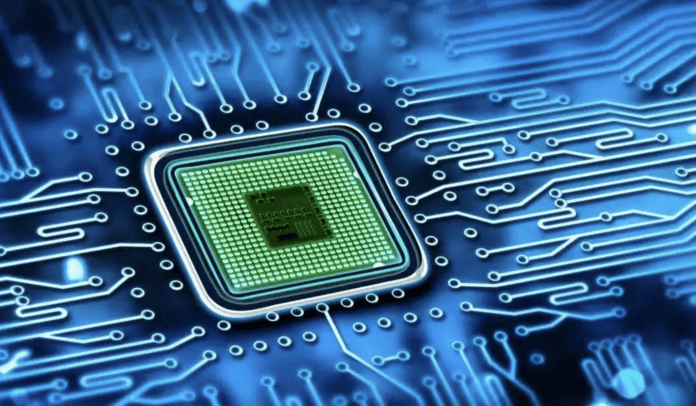Want to know the latest with Sony’s smart label, the ground-breaking massive IoT use-case the firm’s Israeli IoT chip division prototyped with German pharmaceuticals company Bayer a couple of years back? Because it is still going, and about to get real – if word on the ground at IoT Solutions World Congress in Barcelona last month is anything to go by. Well, don’t look here, because Sony Semiconductor Israel is not ready to yak about it just yet.
Nor is Kigen and nor is Vodafone; and nor is Bayer, which has been literally tearing through a limited run of smart labels, issuing sensor alerts when bags of fertiliser are opened, since the project started in late 2020. But something is brewing, which has got the IoT market in a whirl, and should be clearer in the coming weeks. “I can’t say anything,” responds Guy Cohen, director of product management at Sony Semiconductor. “But there are things going on.”
He adds: “But it is developing as a great product.” Word is, indeed, that Sony Semiconductor has produced a whole service wrap around the product; what that means, exactly, and how far Bayer has gone with the product, and how close to full commercialisation is unclear. But the smart label mixes all of Sony Semiconductor’s favourite ingredients: cellular IoT, an integrated SIM (iSIM), other integrated functions, power optimisation – in printable electronics.
It clearly features major innovation, alongside – including from other partners in the project. But these same core principles are open for discussion, and Sony Semiconductor has an interesting tale and Cohen, as it goes, is in an otherwise-loquacious mood. Which means the conversation is worth printing in full; it tells of the state of cellular IoT and pace of innovation. All the answers below are from Cohen. Stay tuned for more on the smart label, soon.
…
Let’s start with the new ALT1350 chipset, which offers a dual-band NB-IoT and LTE-M radio, support for NTN satellite comms, and an ‘AI sensor hub’. Briefly, what is the most striking feature of this product?

“So the ALT1350, which should be commercial in 2023, has several integrated functions, all of which optimise power for cellular IoT solutions. Its advances are quite revolutionary, I would suggest – to the point it completely changes the industry view on the longevity of low-power cellular IoT devices. We expect an 80 percent improvement in power consumption in eDRX standby mode, and an 85 percent improvement for small data messages.
“It also has an integrated sensor hub unit, or subsystem, to collect data from the sensors while maintaining ultra-low power consumption – very suitable for metering in the utilities segment, but relevant to all different kinds of applications targeting a battery life of 10 years. So the improvement in power consumption, versus previous generations, is significant. In certain cases, the battery life can be extended by four-times. It means there really isn’t a limit on power consumption, almost at all.”
Does that close the technical gap for NB-IoT longevity with the likes of LoRaWAN and Sigfox? Is that the argument?
“For sure. It makes cellular IoT much more comparable, and closes that gap. But cellular has other advantages, of course – because the infrastructure, the network, is already there. LTE infrastructure is already well established and widely available. There is no need to install dedicated infrastructure to support it. Which makes Cat-M and NB-IoT much easier to deploy and go mass-market. The ALT1350 also makes cellular similar on a power level.”
Will both of those cellular IoT technologies survive? Are they both relevant; are they complementary?
“Yes, definitely. Cat-M and NB-IoT were introduced during the LTE era. In the 5G era, there are three main use cases: MBB, for video streaming and virtual reality and things like that; URLLC, for industry and vehicles, where latency and reliability are critical; and the massive-scale incarnation of the MTC from the LTE era (as mMTC) – and there is no new technology for mMTC. 5G NR is not part of this massive IoT game; it is all about Cat-M and NB-IoT.
What about RedCap?
“RedCap is a bit different. It is more comparable with LTE Cat-1 through to Cat-4. It delivers slightly higher throughput and performance. There is no 5G NR technology that offers a precise replacement for Cat-M and NB-IoT, and, actually, the 3GPP standard makes clear they are here to stay. All the tier-one operators and vendors have this view: there is no real replacement in cellular, so they will be here for the next 15-20 years, at least.”
Do the operators understand IoT? Are they doing a good job selling IoT? Or are their strategies shifting, to the point they are handing that responsibility to smaller MVNO-type operations?
“No, I don’t see any shift. Historically, their focus was more on the consumer market – the MBB part of 5G, on smartphones and such. But they understand the value of IoT, and are investing resources into it. For example, they are deploying technologies such as DSS to allow coexistence of high throughput 5G with low-throughput IoT based on Cat-M and Cat-NB – using dynamic spectrum sharing at the radio level, to separate spectrum between them.
So that is one sign they see the value in it, and are investing in it. They also perceive it as a dedicated use case that you need to bring different attention to – because the technology is different, the KPIs are different. They understand that; there isn’t a shift away from IoT, to put IoT aside. But the MVNOs provide value, as well. The ALT1350 is a single SKU solution, very small and compact, with many integrated functions, for any LTE market.
“You don’t need different kit for different operators or different geographies. And the MVNOs provide value in this way, through their ability to support wide deployments from a single profile, and work in different places with different operators for different applications.”
How are your sales of NB-IoT and LTE-M chipsets? Are they where you want them to be, and expected them to be?
“The market is definitely accelerating. We have met our own internal forecasts, and we see it continuing to accelerate in the next few years. Today, we can see great deployments with utilities for all kinds of meters, including gas, electricity, water meters. And we expect more growth in additional segments. For example, tracking will become more and more relevant for IoT use cases.”
Just talk about Sony Semiconductor’s profile versus rivals, of which there are a number? How should we characterise your company versus the rest?
“So, yes, there are several players in this market – which is good because it means the market is growing. I think that several years ago, as Altair, we burst onto the scene with a very good IoT solution for power consumption, and the market followed us several years later. So we have that legacy of innovation. Our advantage, as well, is that we are now part of Sony, a big company with many channels to market.
At the same time, we are focused entirely on cellular IoT. Our complete focus and technology is about IoT from the start: low power design, optimal resources in terms of the chipset system. The total strategy is about IoT – which is different from other companies, which are perhaps bigger or have different or more diversified products.”
The innovation story seems to be a good one – with advances in power consumption, integrated hardware and software and radios, industry development of SIM technology, the one-SKU proposition, the integrated services wrap, plus the smart label (which we can’t talk about). Is that the way the company presents itself, also?
“Those are things we are proud of; innovation is a key focus for us. We have innovated with every product we have brought to market. It is something that Sony puts focus on, too. The single SKU – to support all LTE bands in a single platform – is an important innovation. We were the first to integrate a baseband and RF circuit into a single chip. iSIM is exactly right for IoT, and something we are very proud to continue to develop. It is the way the IoT market will go.
“With iSIM, the technological solution is innovative in terms of the silicon orientation. But iSIM is also a good example of how the IoT ecosystem works together, which is very important to us. We really believe in this ecosystem. It is something we cannot do alone, and there is great cooperation with major partners that help us to do it – completely together with them. iSIM is the real IoT solution for secure connectivity, already today and into the future.”

